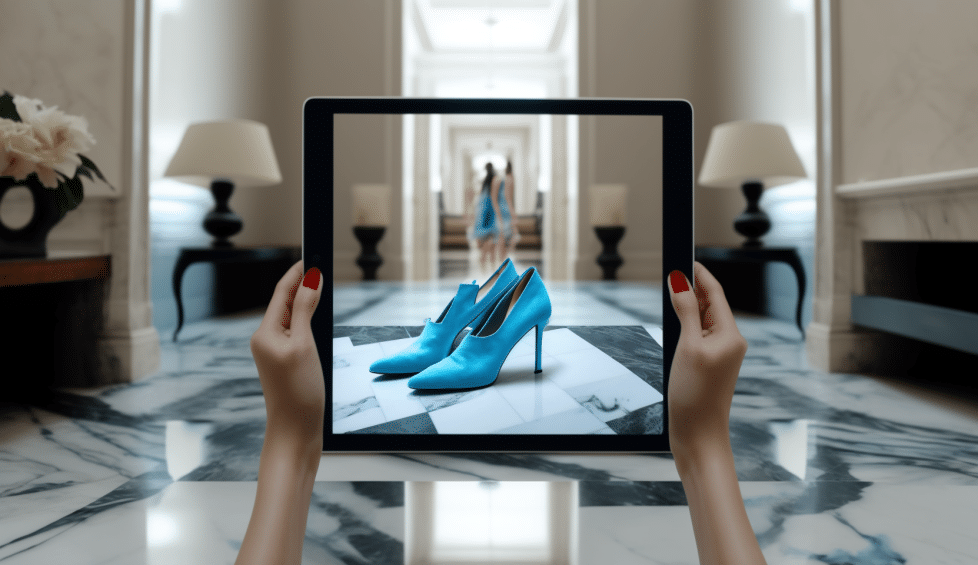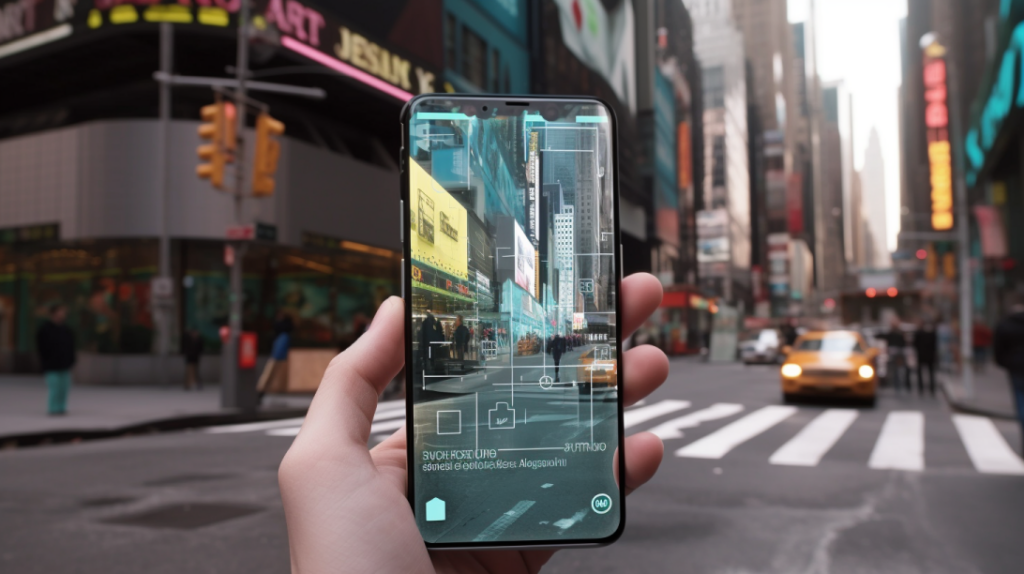
In recent years, Augmented Reality (AR) has gained more and more attention as it allows for the integration of digital content with the real world. The technology has many applications, but so far, AR has mostly been limited to mobile devices. However, with the introduction of WebAR, this is changing.
WebAR brings AR experiences directly to the web browser without the need to install an app. In this article, we will take a closer look at WebAR, what it is, how it works, and what benefits it offers.
What is WebAR?
WebAR is a technology that allows for Augmented Reality to be experienced directly in the web browser. Unlike traditional AR applications that require a separate app, WebAR can be run directly on a website. WebAR uses the camera and sensors of the device to integrate digital content into the real world. This is done by using markers or objects in the real world that serve as reference points.
How does WebAR work?
WebAR is based on the use of WebRTC (Web Real-Time Communications), an open-source technology that allows for the transmission of video and audio streams directly in the browser. WebRTC uses peer-to-peer communication to establish a direct connection between two devices without the need for a server. This way, data can be transferred quickly and directly, which is particularly important for WebAR, as it relies on real-time communication between the device and the website.

Benefits of WebAR
WebAR offers many benefits compared to traditional AR applications. Some of the key advantages are:
• No app installation required
With WebAR, no separate app installation is required. Users can simply visit a website and experience the AR directly in the web browser. This greatly facilitates the distribution and use of AR content.
• Compatibility with various devices
WebAR is compatible with a variety of devices, including smartphones, tablets, and desktop computers. Users can experience AR content on their preferred device without having to worry about whether their devices are compatible with the AR app.
• Easy integration into websites
WebAR can be easily integrated into websites as it is based on web technologies. This greatly facilitates the development and integration of AR content into existing websites.
• Real-time communication
WebAR is based on real-time communication between the device and the website. This allows for an interactive AR experience in real-time, enabling higher user engagement and interaction.

Applications of WebAR
WebAR has many applications in various industries. Some of the key applications are:
• Marketing and advertising: WebAR can be used for marketing and advertising campaigns to create an interactive and impressive AR experience.
• E-commerce: WebAR can be used to create virtual try-on or product visualization tools that help customers better understand and purchase products.
• Real estate: WebAR can be used to create virtual 360-degree tours of properties that help prospective buyers get a better sense of the space.
• Education: WebAR can be used to create interactive learning content that helps students better understand complex concepts. • Tourism: WebAR can be used to create virtual tours and explorations of landmarks and locations that help travelers enhance their experience.
How to create WebAR?
There are several ways to create WebAR. Here are some of the key tools and platforms that can be used:
• A-Frame: A-Frame is a framework for creating WebAR content using HTML and JavaScript.
• Three.js: Three.js is a library that allows developers to create 3D graphics and animations in web apps.
• ZapWorks: ZapWorks is a platform that allows businesses to create and deploy interactive AR experiences.
• 8th Wall: 8th Wall is a platform that allows developers to create AR content that can run on mobile devices and the web.
• Wikitude: Wikitude is a platform that provides developers with tools and resources to create AR content on mobile devices and the web.
• Reality Composer: Reality Composer is an app from Apple that allows users to create AR experiences without any programming knowledge.
• AR.js: AR.js is an open-source library that allows for WebAR content creation by simply using HTML code and a QR code.
Depending on the needs and skill level of the developer, different tools and platforms can be used to create WebAR content. Choosing the right tool depends on what type of content is being created and how much experience the developer has with creating AR content. It is important to plan and research carefully before choosing a specific platform or tool to ensure that the creation of WebAR content goes smoothly and delivers the desired results. To successfully leverage WebAR, it is important for businesses and brands to keep up with the latest trends and technologies in this area and continuously educate themselves. Using WebAR offers an excellent opportunity to increase brand awareness and interaction, and engage customers in new and creative ways.

What are the benefits of WebAR compared to traditional AR technology?
WebAR does not require a special app installation and can be accessed through the web browser, providing greater accessibility and user-friendliness. It is also easier to implement and more cost-effective than traditional AR technology.
What types of businesses can benefit from using WebAR?
WebAR can be used to create various types of AR experiences such as virtual product presentations, 3D scenarios, interactive tutorials, 360-degree tours, and much more.
Where can I learn more about WebAR?
There are many online resources that focus on WebAR and creating AR experiences. It is worth keeping up to date with the latest trends and developments and consulting experts in this field as needed. At Exponential Dimensions, you can try WebAR (for Android) at this link.
Summary
In summary, WebAR is a promising technology that expands the boundaries of augmented reality and allows businesses to reach and engage their customers in unique ways. Integrating AR experiences into a website increases interaction between customers and businesses, which can lead to higher engagement and conversion rates. Additionally, WebAR offers the advantage of being accessible on all mobile devices without additional apps or hardware. However, it is important to keep user-friendliness in mind when creating WebAR experiences and ensure that the experiences are intuitive and easy to navigate. With the increasing popularity of augmented reality and the ongoing development of WebAR technologies, the use of WebAR will undoubtedly continue to grow in the future and lead to even more creative and interactive experiences.